
|
Although no one is sure when Swiss cheese was invented, the first mention of the alpine delicacy was by the Roman historian Phily the Elder who called it Caseus Helveticus, or "the cheese of the Helvetians", an ancient Swiss tribe. Today, around 450 different kinds of cheese are produced and consumed in Switzerland making it one of the country's oldest and most vital resources. Here's a look at how traditional Swiss cheese is made, from the pasture to the cherished finished product! |
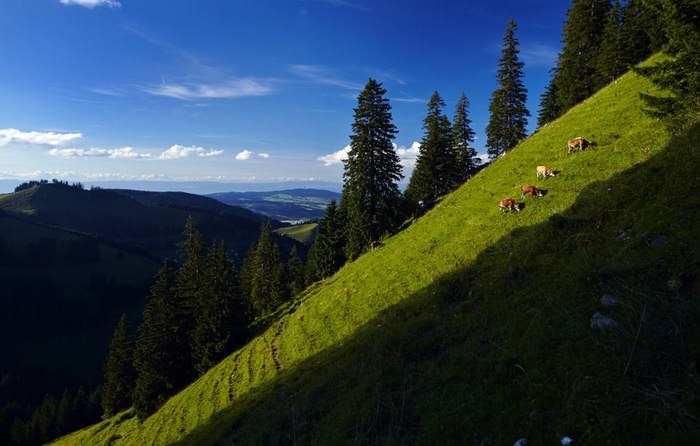 |
| It all begins with the cows. Here the cows are grazing the Swiss summer grass, but in the winter, they are fed hay in order to acheive a flawless final product. |
|
|
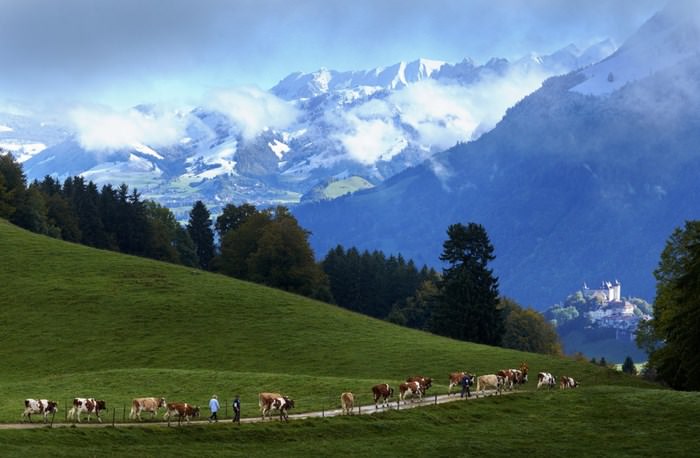 |
| The cows are led by their herdsmen to the cowshed to begin the milking process. |
|
|
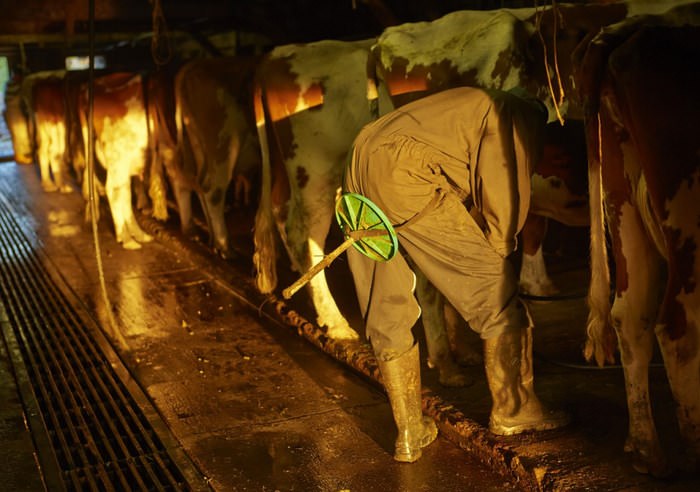 |
| The diary farmer milks the cows, with a stool attached to his bottom for when he needs a moment of rest. It takes about 10 liters of milk to make one kilogram of cheese. |
|
|
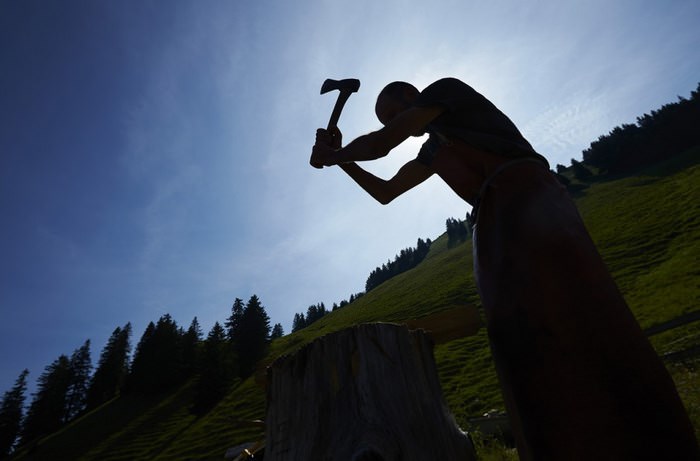 |
| Cutting the wood for the fire that will heat the milk and begin the cheese-making process. |
|
|
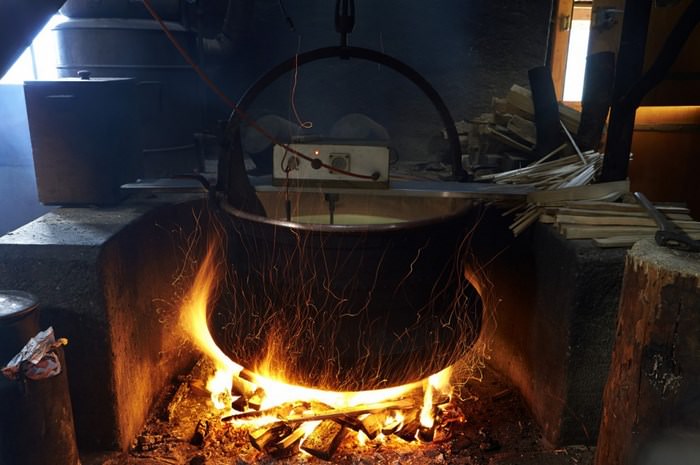 |
| The cauldron is heated to 32 degrees Celsius or 90 degrees Fahrenheit while it is occasionally stirred. Once the milk has reached the needed temperature, it is transfered to a larger container where the fermenting agents will be added. |
|
|
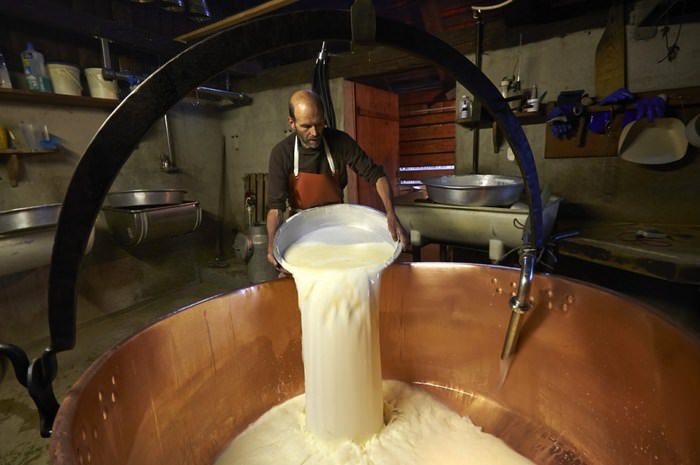 |
| Here rennet, taken from the stomach lining of cows, and a fermentation culture are added to the milk and stirred together. These ingredients turn the milk into a coagulated mass of curds, which contain the essential cheese-making bacteria. |
|
|
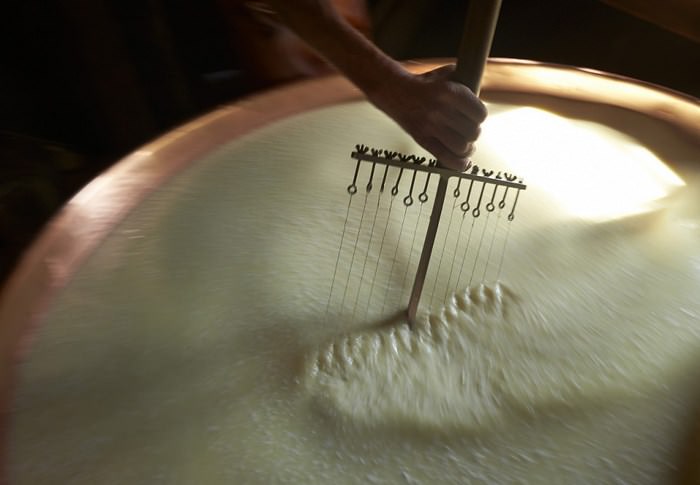 |
| Next the curds are cut up and stirred with this instrument called a 'cheese harp', which also separates out the whey leaving the rest in small granule shapes. The size of the granules will determine the kind of cheese, so that the larger they are, the more liquid remains and the softer the cheese will be. |
|
|
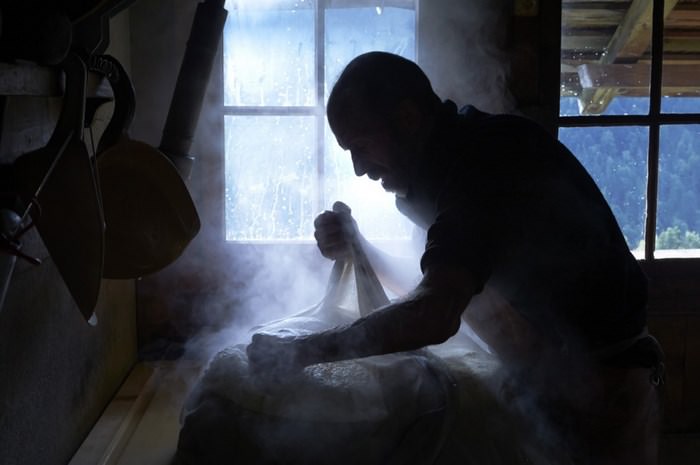 |
| Here the granules are put into a mould which is pressed in order to remove even more liquid. |
|
|
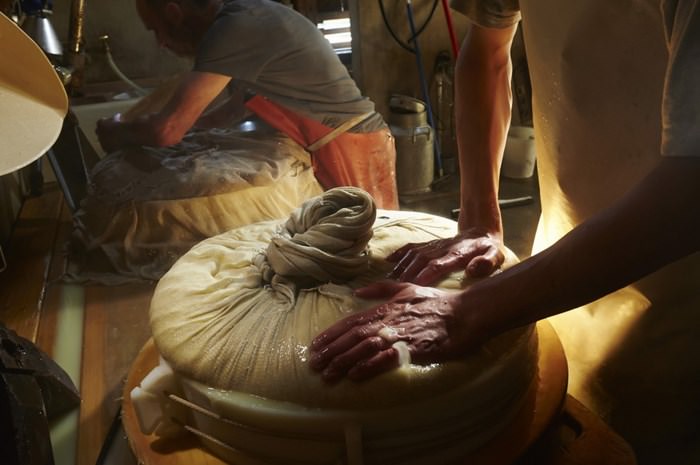 |
| Still pushing the cheese into the mould to remove excess liquid. |
|
|
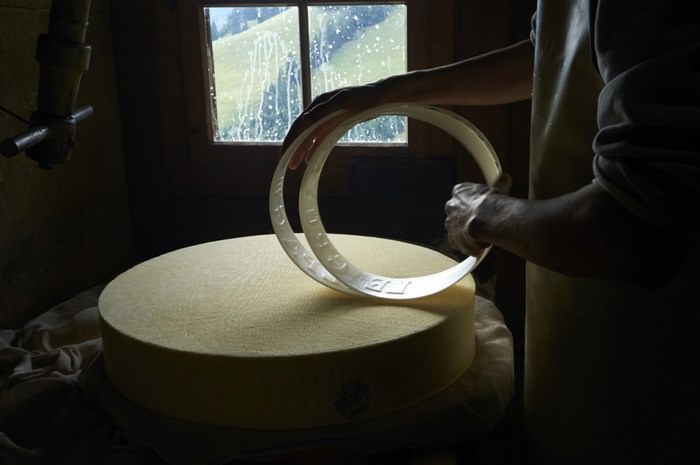 |
| The cheese is nearly a finished product. The seal of the diary farm is pressed into the sides of the wheel so that the cheese can be traced back to its manufacturer. Finally, the cheese is removed from its mould after a day and it is placed in a salt bath. |
|
|
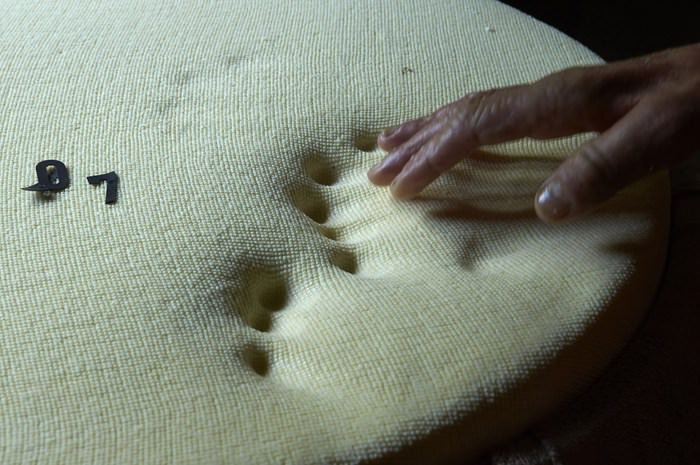 |
| The recipe for the cheese salt bath is a closely guarded secret because it helps form the brine of the cheese, which gives it its unique aroma. The cheese remains in the bath for about two hours if it is soft, or 3 days if it is a harder cheese. |
|
|
 |
| The last stage is the maturing process. The cheeses are kept in facilities with humidity levels of over 90 percent at controlled temperatures. Although it seems that the cheese is at rest, their natural fermentation process continues, and they are continuously rubbed with brine and turned over. The entire maturation period depends on the cheese, but it can take anywhere from a few weeks for soft cheeses to several months for harder cheeses. |
|
|
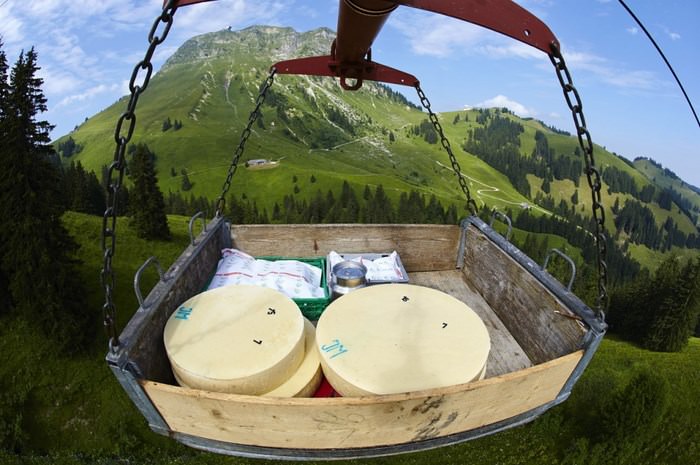 |
| The unique and traditional taste of Swiss cheese, known as Vacherin Mont d'Or, is the result of placing the cheese wheels in a pine box in the open air to ripen. Vacherin is produced between September and April because the farmers do not have enough milk to produce other larger wheels of cheese in the winter months. |
|
|
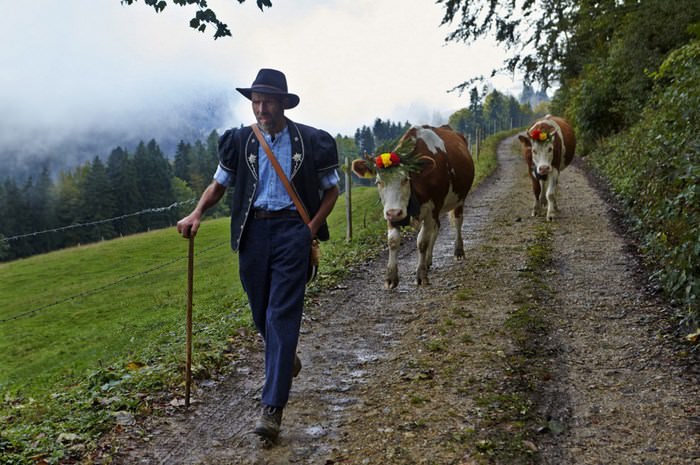 |
| A Swiss herdsman walking with this decorated cows back to pasture. |
|
|
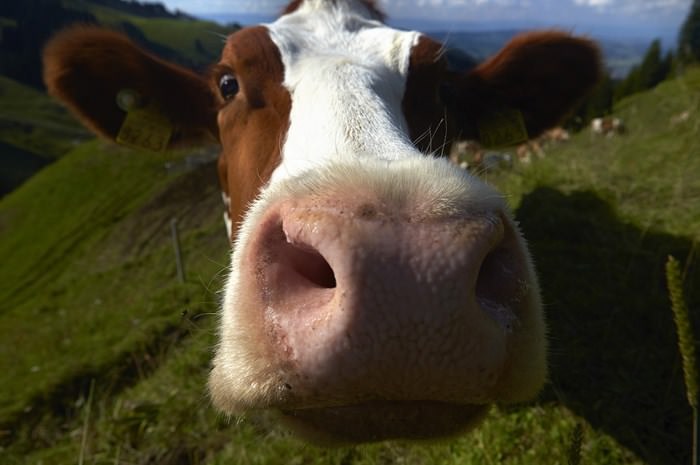 |
| The End: a happy Swiss cow ready to do it all again! |
|
|
 5:34
5:34
Fascinating: A Brief History of Cheese!
This Ted Ed video gives us an animated look at the history of cheese.
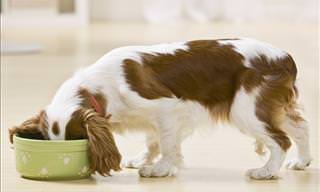
WARNING: If You Love Dogs, This Information is Vital
If you're a dog lover, you should spread this information around. Don't feed dogs these common foods!
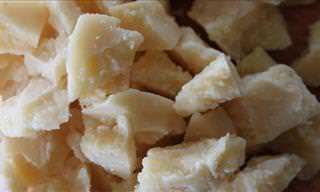
Eating Cheese Every Day Helps Your Heart, Says New Study
Good news for you cheese lovers out there. A new study has found that a single ounce of Grana Padano cheese per day can help reduce blood pressure. Read on!

This Ham and Cheese Omelet is Perfect for All Meals
This recipe will show you how you can make a delicious ham and cheese omelet.
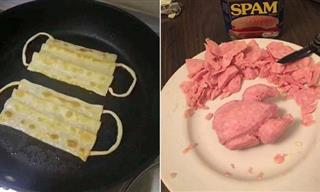
Hilarious! Didn’t Your Mom Tell You Not to Play With Food?
These hilarious food fails suggest that some culinary creations don't belong online, and we just wish they listened to their parents and didn't play with food
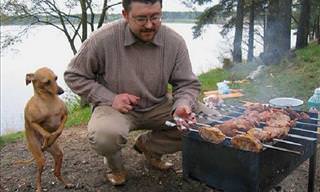
You'll Be Amazed at How Far Dogs Will Go to Beg for Food!
Here are 20 hilarious examples of begging dogs that will melt your heart and make you scream with laughter!
 12:51
12:51
Learn to Make 4 Scrumptious Breakfasts from Gordon Ramsay!
Gordon Ramsay will show you 4 incredibly easy & scrumptious breakfasts so that everyone will find a new recipe to experiment this weekend!
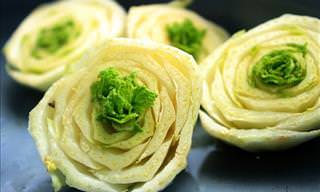
Re-Grow These 10 Vegetables - Just Use Water!
It's amazing how much money you can save by re-growing these 10 favorite vegetables! Follow our tips and instructions to learn more about how you can have a constant supply of your favorite greens, without paying an extra penny.
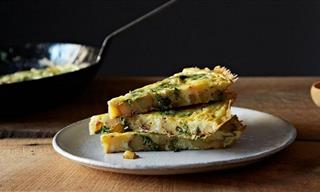
Three Terrific Recipes for Tasty and Healthy Root Vegetables
The following three recipes will teach you how to utilize lesser-known parts of a variety of wonderful root vegetables, earning you plenty of compliments and praise.
 3:34
3:34
Start the Day Differently With These Delicious Spicy Eggs
Tired of the same old scrambled eggs every morning? Try Gordon Ramsay's delicious recipe for spicy Mexican eggs.
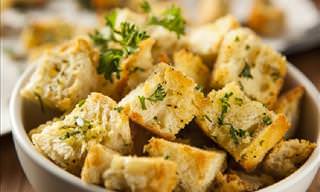
These 4 Delicious Croutons Will Upgrade Every Soup and Salad
Most people like adding croutons to salads and soups for the crunch, and these 4 crouton recipes will seriously upgrade every meal!
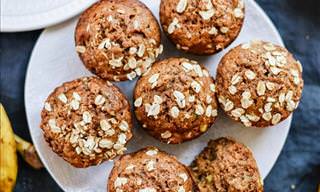
Maple Banana Muffins That Are Healthy as Well as Delicious
This recipe will show you how to make delicious and healthy maple-sweetened banana muffins.

Make Much Better Eggs With These 10 Awesome Tips
You may think you're able to cook eggs well, but these tips will simply take your ability to a whole new level. Learn how to cook eggs right in this post.
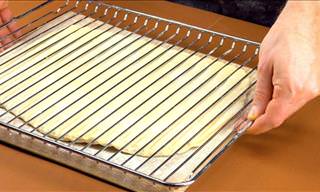 5:24
5:24
Make Bread the Centerpiece of Your Table With These Tricks
Surprise your family and friends with these delicious creations made of bread dough. If you want to surprise your guests with a special something and really stand out, try one of these useful little tricks, no extra equipment needed!

We Bet You've Never Tasted Potatoes As Delicious As These
These are the best potatoes you have ever tasted!
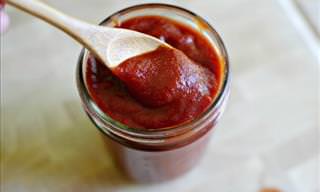
12 Recipes for Sauces That You’ll Never Have to Buy Again
Sauces and spreads are a must in every kitchen, but when we buy them in the store, we buy sauces filled with preservatives. Here's how to make your own!
 3:07
3:07
A Homemade Carrot Jam Recipe That’s Great for Your Health
Want to try a jam that's yummy but also super healthy? Then try out this delicious carrot jam recipe.
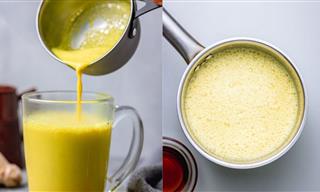 1:32
1:32
Turmeric Milk: Your Nighttime Sleep Elixir
Improve your sleep with this turmeric milk recipe.

This is Arguably the Tastiest Vegan Chili You'll Ever Make
This recipe will show you how to make a delicious vegan lentil chili.
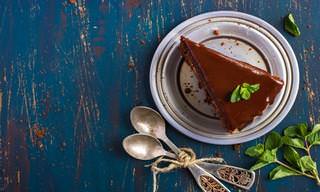
14 Finger Lickin’ Good Cake Recipes for Every Occasion
You can have your cake and eat it with these 14 effortless cake recipes for every taste and preference!
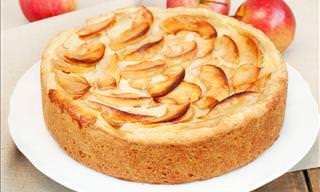
Have You Tried this Delicious Apple Upside Down Cake?
Impress your friends and family with this beautiful and incredibly delicious apple upside-down cake. While this recipe may require some effort, it is certainly worth it.

This Exquisite Risotto is a Seafood Lover's Dream
This recipe will show you how to make a delicious and hearty seafood risotto.
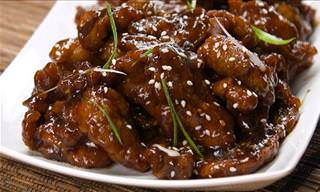
How to Make Luscious and Mouthwatering Mongolian Beef
This is arguably one of the most popular dishes that Chinese restaurants make. Here's how you can make this tasty dish from the comfort of your own home.
 19:25
19:25
These Nostalgic Dishes Are Making an Unexpected COMEBACK
Remember French onion soup, quiche, and bread bowls? Well, these and other classic 1980s foods are making a huge comeback!

Learn Your Fish: 9 Common Types and How To Prepare Them
Do you think that choosing and cooking fish is a hassle? Let us change your mind by teaching you to distinguish between 9 fish varieties
 3:09
3:09
Make the Most Unique and Tasty Coleslaw!
Make the Most Unique and Tasty Coleslaw for your friends and family with this awesome recipe.

A Twist on Traditional Meals: 8 Delicious Savory Muffins
For a fun and new way to serve up some hearty and delicious grub, try turn a traditional recipe into a muffin! From breakfast ideas, to pasta, main courses and appetizers, here are 8 fantastic savory muffin ideas you can serve.
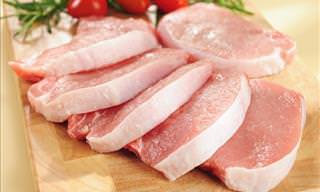
7 Tips That'll Help You Say Goodbye to Dry Pork Chops!
Follow these fantastic tips and you'll never have to suffer a dry pork chop again!
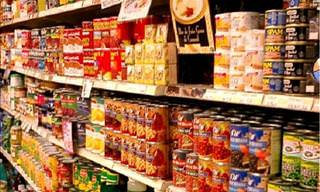
Waste Not Want Not: How to Use the Liquid from Canned Goods
Most people hurry to drain the liquid from cans into the drain, but you should know the 5 ways to not waste a single drop of this liquid gold!
 14:10
14:10
Recipe: How to Make Japanese Curry Udon Noodles
Curry udon is a spicy, mouth-watering noodle soup that's famous across Japan. Learn how to prepare this mouth-watering dish.

7 Ways to Instantly Upgrade Your Chicken Breast
Here are 7 simple but powerful techniques you can start using right away to make your chicken breasts taste better.

31 Quick and Easy Snacks That Have Less Than 100 Calories Each!
The following tasty and simple-to-make healthy snacks are just what you need to treat your cravings without ever tipping the 100 calorie line.
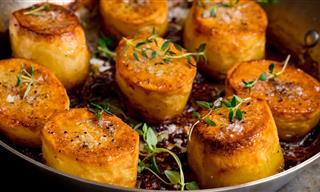 4:51
4:51
A New Delicious Method to Cook Potatoes You Must See!
This new method of cooking potatoes is so simple, but it gives you that perfect golden crust every time. It very quickly became my new favorite!
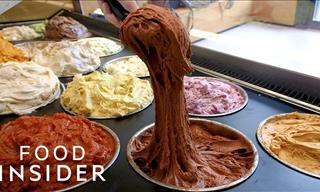 8:18
8:18
The Ultimate List of Extravagant Desserts You Must Try
Here are some truly unbelievable and outrageous desserts from around the world that you simply must add to your bucket list.

Wake Up to This Heavenly Breakfast Recipe
This heavenly treat combines all of your favorite breakfast ingredients
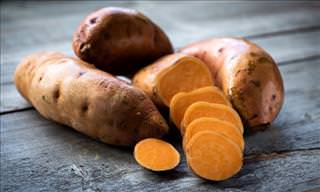 3:03
3:03
Here Are the Very Best Ways to Cook Sweet Potatoes
There are numerous different ways of cooking sweet potatoes, but which is the most nutritious? Find out in this informative video.
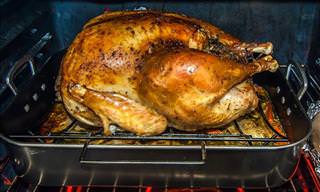
Cook Like A Chef: A Guide To Cooking The Perfect Chicken
Want to learn how to prep and cook chicken using professional methods like real chefs? Take a look at this guide and you'll be an expert in no time!

These 5 Foods Will Help You Fall Asleep Immediately
Having trouble sleeping? Here are five foods that can help you out!
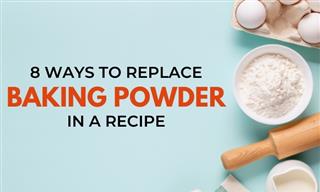
Ran Out of Baking Powder? 8 Easy Substitutes
You can substitute the baking powder in a recipe with ingredients you already have in your kitchen. This article details how you can easily do so.
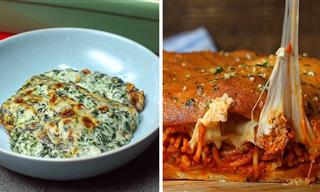 14:59
14:59
6 Unique Italian-Inspired Dinner Recipes You Must Try
These Italian-inspired dishes have a unique twist that makes them even more amazing!
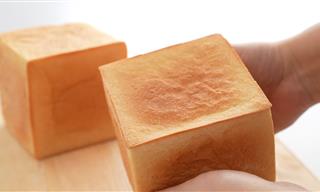 10:12
10:12
This Soft Japanese Milk Bread Just Melts in the Mouth
Ever tried Japanese milk bread? It's just so soft and yummy...
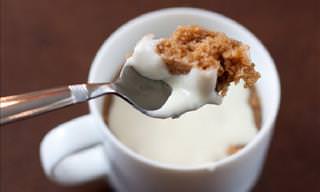
6 Tasty Cakes You Can Make with Just a Mug and a Microwave
If you are a dessert lover, you need to see these fantastic cake recipes you can make in a mug and cook in the microwave. They're absolutely delicious!

The Healthy Carrot and Nut Muffins Of Your Dreams
Are you looking for a healthy treat, but don't want to compromise good nutrition habits? This easy carrot muffin recipe is just what you need
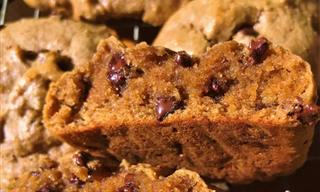
3 Winning Banana-Based Delicacies Everyone Will Love
From creamy puddings to decadent cakes and vegan cookies, these dishes showcase the banana's endless possibilities.

COLLECTION: Everything You Wanted to Know About Wine!
This collection will expose you to some of our best information about wine, including a full guide for beginner's, the best wine/food combinations and more
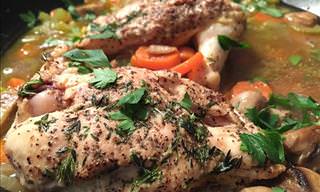
TEN Tasty Alternatives to Salt for Your Cooking Inspiration
Reduce your salt consumption by learning about the alternative ways to add flavor to your food, in the most sensational ways possible.

Prepare 3 Nutritious & Filling Breakfasts in 10 Minutes
Here are three delicious breakfasts that pack all the nutrients you need and will get your day started off with a boost of energy.
To enable your Ad-Free Subscription, please fill the fields below
Your subscription was successful, now you can enjoy an ad-free experience!! Note: To make sure you get no ads, please make sure to log in to your account. If you are logged in already, then refresh the page. The subscription can be cancelled at any time.


